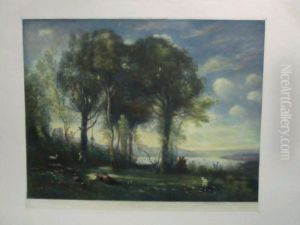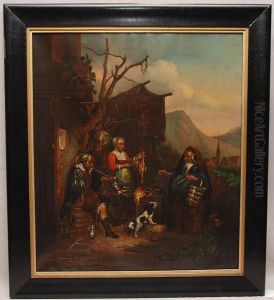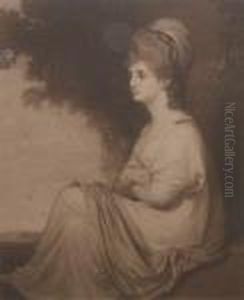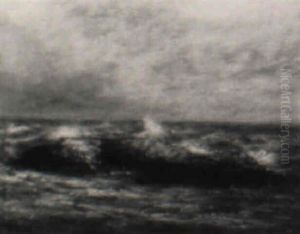Thomas Gold Appleton Paintings
Thomas Gold Appleton, born on March 31, 1812, was an American writer, an artist, and a patron of the fine arts. Hailing from Boston, Massachusetts, he was a prominent figure in the cultural life of New England during the 19th century. He was the younger brother of Henry Wadsworth Longfellow's wife, Frances Appleton, and thus connected to the famed poet by marriage, which brought him into the circle of notable literary and artistic personalities of his time.
Appleton attended Boston Latin School and later, Harvard College, where he graduated in 1831. After his graduation, he embarked on the traditional Grand Tour of Europe, which was a rite of passage for many young men of his social class. This experience had a profound effect on him, exposing him to the artistic and cultural heritage of the Old World and inspiring his lifelong appreciation for the arts.
Returning to the United States, Appleton settled in Boston and quickly became an integral part of its intellectual society. He was known for his wit and became a member of the social circle that included Ralph Waldo Emerson, Oliver Wendell Holmes, James Russell Lowell, and other literary figures. Appleton never married, and he dedicated his life to the pursuit and promotion of the arts. He was a founding member of the Boston Athenæum, one of the oldest independent libraries in the United States, and he played a significant role in the creation of the Museum of Fine Arts, Boston.
As an artist, Appleton dabbled in painting, but his work did not gain the same recognition as his literary and philanthropic efforts. He wrote travel essays, art criticism, and poetry, although few of his writings have stood the test of time. His travel book, 'A Nile Journal' (1876), is perhaps the best-known of his published works. He was also known to have coined the phrase, 'Good Americans, when they die, go to Paris,' reflecting his fondness for French culture.
Thomas Gold Appleton died on April 17, 1884, in New York City. While he did not achieve fame as a writer or an artist in his own right, his contributions as a patron and supporter of the arts were significant, and his influence on the cultural landscape of Boston during the 19th century was substantial.



